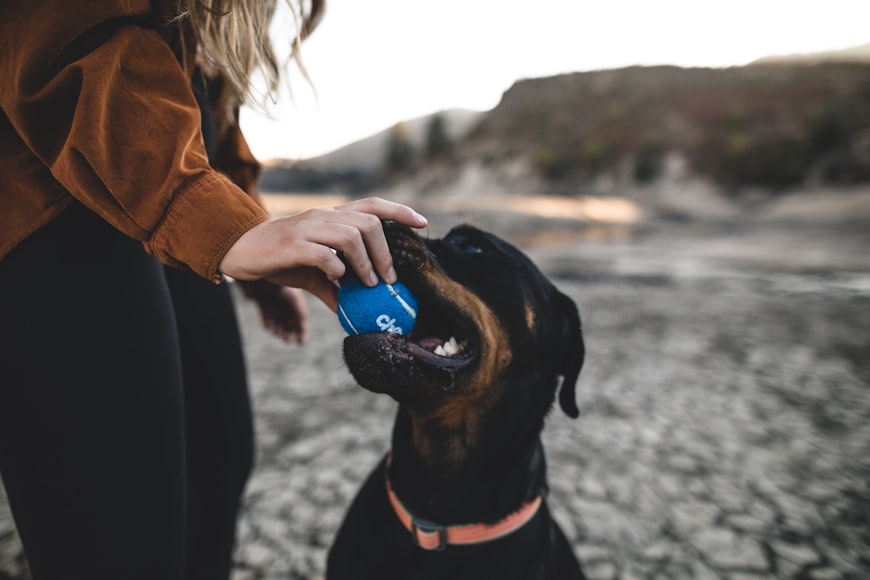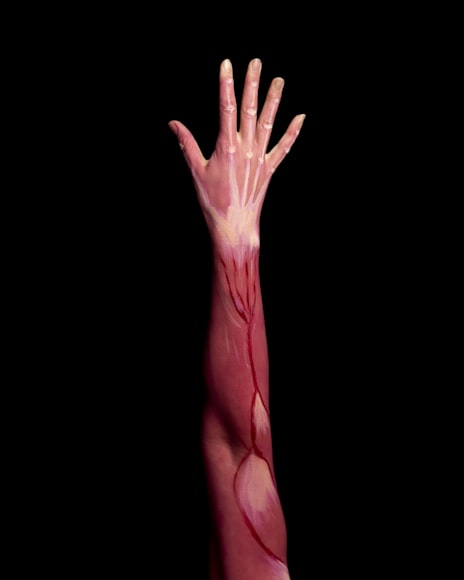Muscle Recovery for Dogs

As loyal companions, dogs often engage in strenuous activities that can lead to muscle strain and fatigue. Just like humans, dogs need proper muscle recovery to maintain their mobility, reduce soreness, and prevent injuries. Here’s a comprehensive guide to muscle recovery for dogs:
Understanding Muscle Recovery
Muscle recovery involves repairing micro-tears and restoring energy stores in the muscles after exercise. This process occurs in two main stages:
- Acute phase: Immediately after exercise, the body initiates inflammation and releases hormones to reduce pain and swelling.
- Chronic phase: Over the next few days, the damaged muscle fibers regenerate and rebuild, increasing muscle strength and flexibility.
Signs of Muscle Soreness in Dogs
Dogs may exhibit subtle signs of muscle soreness, such as:
- Stiffness or difficulty moving
- Reduced activity levels
- Limping or reluctance to walk
- Whining or yelping when touched
Essential Recovery Techniques
1. Rest: Rest is crucial for muscle recovery. Allow your dog ample time to relax and sleep.
2. Hydration: Proper hydration promotes blood flow and removes metabolic waste products. Ensure your dog has access to fresh water at all times.
3. Nutrition: A balanced diet rich in protein and carbohydrates provides the necessary nutrients for muscle repair.
4. Gentle Exercise: Light activities, such as short walks or swimming, can help improve circulation and promote muscle healing. Avoid strenuous exercise during the recovery period.
5. Massage: Gentle massage can reduce muscle tension and promote blood flow. Use circular motions and avoid applying excessive pressure.
6. Cold Therapy: Cold packs or ice baths can reduce inflammation and pain. Apply for short periods (10-15 minutes) several times a day.
7. Heat Therapy: Heat packs or warm baths can relax muscles and relieve stiffness. Use for short periods (10-15 minutes) and avoid applying direct heat to the skin.
8. Veterinary Care: If your dog experiences severe muscle pain, lameness, or swelling, consult a veterinarian promptly.
Supplements for Muscle Recovery
Consider consulting with a veterinarian before giving supplements to your dog. Some helpful supplements include:
- Glucosamine and Chondroitin: These supplements support cartilage and joint health, which can aid in muscle recovery.
- Omega-3 Fatty Acids: Omega-3s have anti-inflammatory properties that may reduce muscle soreness.
- Creatine: Creatine helps replenish energy stores in the muscles.
Prevention of Muscle Soreness
To prevent muscle soreness in dogs:
- Start exercise programs gradually and increase intensity over time.
- Warm up your dog before exercise and cool down afterward.
- Ensure your dog is well-hydrated before, during, and after exercise.
- Avoid exercising your dog on hard surfaces or extreme temperatures.
- Provide a comfortable resting area for your dog.
Conclusion
Muscle recovery is vital for maintaining your dog’s mobility and overall well-being. By following these essential techniques, you can promote muscle repair, reduce soreness, and prevent injuries. Remember, if your dog experiences severe discomfort, consult a veterinarian promptly. With proper recovery care, your dog can enjoy a healthy and active life, full of boundless adventures.
Importance of Muscle Recovery:

Introduction
Just like humans, dogs experience muscle soreness and fatigue after exercise. Muscle recovery is an essential part of a dog’s fitness routine to avoid injury and optimize performance. This article will explore the importance of muscle recovery and delve into the physiological processes involved in muscle repair.
Why Muscle Recovery is Important
Exercise places stress on a dog’s muscles, causing tiny tears in the muscle fibers. During recovery, the body repairs and rebuilds these muscle fibers, making them stronger and more resistant to future damage. Adequate recovery allows dogs to:
- Prevent muscle soreness and fatigue
- Reduce the risk of injury
- Enhance performance
- Improve overall health and well-being
Physiological Processes Involved in Muscle Repair
Muscle recovery involves several complex physiological processes, including:
- Inflammation: After exercise, the body releases inflammatory mediators to the damaged muscle tissue. This inflammation helps to clear away damaged cells and promote healing.
- Repair: The body produces growth hormones and other growth factors that stimulate the production of new muscle fibers. New proteins are synthesized to repair and strengthen the damaged muscle tissue.
- Remodeling: Over time, the repaired muscle fibers undergo remodeling to optimize their structure and function. This process helps to restore the muscle’s original strength and functionality.
How to Promote Muscle Recovery in Dogs
- Rest: Allow dogs to rest adequately after exercise. This provides the body with time to repair muscle tissue.
- Hydration: Ensure dogs have access to plenty of fresh water to support hydration and muscle recovery.
- Nutrition: Feed dogs a balanced diet that provides sufficient protein and other nutrients to support muscle growth and repair.
- Stretching: Gentle stretching can help to improve flexibility and reduce muscle stiffness.
- Massage: Massaging tired muscles can promote blood flow and facilitate faster recovery.
- Warm-up and Cool-down: Gradually warm up dogs before exercise and cool them down afterward. This helps to prepare muscles for activity and reduce post-exercise soreness.
Conclusion
Muscle recovery is an integral part of a dog’s overall fitness and well-being. Understanding the importance of muscle recovery and the physiological processes involved will help pet owners optimize their dogs’ health and performance. By following the recommendations above, owners can ensure that their dogs get the rest, nutrition, and support they need to recover properly after exercise.
Types of Recovery Techniques:

Introduction
Exercise is crucial for maintaining a healthy and active lifestyle for dogs. However, strenuous activity can put stress on their muscles, leading to soreness, stiffness, and even injury. Implementing effective muscle recovery techniques is essential for dogs to maximize their performance and minimize the risk of musculoskeletal issues.
Types of Recovery Techniques
There are three main types of recovery techniques for dogs:
1. Active Recovery
Active recovery involves performing light exercises that increase blood flow and promote circulation. This helps deliver nutrients and oxygen to sore muscles, facilitating repair. Suitable activities include:
- Walking on a leash
- Swimming
- Gentle yoga or stretching
2. Passive Recovery
Passive recovery focuses on resting and allowing the body to heal naturally. This includes:
- Resting in a comfortable spot
- Massage
- Warm compress application
- Cold therapy (such as ice packs)
3. Nutrition
Proper nutrition plays a crucial role in muscle recovery. Dogs need adequate protein to repair damaged muscle fibers, as well as carbohydrates for energy and electrolytes to hydrate their muscles. A balanced diet should include:
- Lean protein sources (chicken, fish, beef, eggs)
- Complex carbohydrates (rice, pasta, oatmeal)
- Fruits and vegetables
- Bone broth for hydration and electrolytes
Which Recovery Technique is Best?
The best recovery technique for your dog depends on their individual needs and activity level. For dogs who participate in intense exercise or have a history of muscle injuries, a combination of active and passive recovery is recommended. Active recovery should be performed immediately after exercise, followed by passive recovery during the rest of the day.
Dogs with mild muscle soreness may benefit from passive recovery alone. Nutrition should be considered in all recovery plans to provide the necessary nutrients for muscle repair.
Timeline for Recovery
Muscle recovery can take anywhere from a few days to several weeks, depending on the severity of the muscle damage. It is important to be patient and allow your dog adequate time to rest and heal.
Conclusion
Muscle recovery is an integral part of maintaining a healthy and active lifestyle for dogs. By implementing effective recovery techniques, including active recovery, passive recovery, and proper nutrition, you can help your dog minimize muscle soreness, stiffness, and injury risk, allowing them to enjoy a lifetime of adventures.
Active Recovery:

Just like humans, dogs need recovery time after intense exercise to repair and strengthen their muscles. Active recovery involves gentle exercises that promote blood flow and muscle relaxation, aiding in the recovery process.
Benefits of Active Recovery:
- Improves blood flow to muscles, delivering oxygen and nutrients
- Reduces muscle soreness and stiffness
- Promotes muscle relaxation and flexibility
- Decreases risk of injuries by maintaining range of motion
Types of Active Recovery Exercises:
- Light walking: Walking at a slow, steady pace allows muscles to gently move and circulate blood.
- Swimming: The buoyancy of water supports muscles, reducing impact while providing resistance for low-intensity exercise.
- Gentle jogging: Start with a few short, slow jogs and gradually increase the duration and intensity as the dog recovers.
- Foam rolling: Use a foam roller to gently apply pressure to sore muscles, promoting relaxation and reducing tension.
- Massage: Gentle massage helps release muscle tension and improve circulation.
When to Use Active Recovery:
Active recovery is appropriate after moderate to intense physical activity. It should not be used as a substitute for rest, but rather as a complementary activity to enhance recovery.
Caution:
- Start gradually and avoid overexertion.
- Listen to your dog’s body language and stop if they show signs of discomfort.
- If your dog has any underlying health conditions, consult your veterinarian before engaging in active recovery.
Tips:
- Keep the duration of active recovery sessions short and tailored to your dog’s fitness level.
- Allow plenty of rest days between exercise sessions.
- Provide a nutritious diet and fresh water to support muscle recovery.
- Monitor your dog’s temperature and seek veterinary attention if they show signs of heat exhaustion.
Conclusion:
Active recovery is an essential part of a dog’s fitness routine. By incorporating gentle exercises that promote blood flow and muscle relaxation, pet owners can support their furry friends’ recovery and maintain their musculoskeletal health. Remember to listen to your dog’s body language and consult your veterinarian if you have any concerns.
Passive Recovery:

As pet owners, it’s crucial to understand the importance of muscle recovery for our canine companions. Strenuous activities, such as exercise or play, can lead to muscle fatigue and soreness. Passive recovery techniques offer a safe and effective way to promote their recovery and enhance their well-being.
Rest and Relaxation
The most basic form of passive recovery is rest. Provide your dog with a comfortable and quiet place to rest and avoid strenuous activities for 24-48 hours after intense exercise. This allows their muscles to repair and rebuild.
Massage
Gentle massage can help to improve circulation, reduce muscle tension, and promote relaxation. Use your fingers or a massage tool to apply gentle pressure to the sore areas, avoiding any areas of inflammation or injury.
Heat Therapy
Applying heat to sore muscles can help to relax them, increase blood flow, and speed up the healing process. You can use a warm towel, heating pad set to low, or a warm bath to provide heat therapy.
Cold Therapy
In certain cases, cold therapy can be beneficial for reducing inflammation and pain. Apply a cold compress or ice pack to the sore areas for 15-20 minutes at a time, several times a day. Be sure to wrap the ice pack in a towel to avoid direct contact with the skin.
Additional Tips
- Hydration: Ensure your dog has plenty of water to stay hydrated, as it aids in muscle recovery.
- Nutrition: Provide a balanced diet rich in protein to support muscle growth and repair.
- Stretching: Gentle stretching exercises can help to prevent muscle stiffness and improve mobility.
- Pain Management: If your dog is experiencing significant pain or discomfort, consult a veterinarian for appropriate pain management options.
Conclusion
Passive recovery techniques are essential for promoting muscle recovery in dogs after strenuous activities. By implementing rest, relaxation, massage, heat therapy, cold therapy, and other supportive measures, you can help your furry friend recover faster, reduce muscle pain, and maintain their overall well-being. Remember to consult a veterinarian if your dog’s muscle soreness persists or worsens.
Nutrition for Recovery:
Muscle recovery is an essential aspect of maintaining a healthy and active dog. After strenuous exercise or injury, muscles undergo repair and recovery to regain their strength and mobility. Proper nutrition plays a vital role in this process, providing the necessary nutrients for muscle repair, energy replenishment, and inflammation reduction.
Adequate Protein Intake
Protein is crucial for muscle recovery as it provides the building blocks for muscle repair. Essential amino acids, which cannot be synthesized by the body, must be obtained from dietary sources. High-quality protein sources, such as meat, poultry, fish, and eggs, provide all the essential amino acids needed for optimal muscle recovery.
Importance of Carbohydrates
Carbohydrates provide energy for dogs before, during, and after exercise. During intense activity, muscles rely heavily on glycogen, a stored form of carbohydrates, for fuel. Depletion of glycogen stores can lead to muscle fatigue and impaired recovery. Therefore, providing adequate carbohydrates in the diet helps replenish glycogen levels and supports muscle recovery.
Role of Antioxidants
Inflammation is a natural response to muscle damage, but excessive inflammation can delay recovery. Antioxidants, such as vitamin C, vitamin E, and beta-carotene, help neutralize free radicals that contribute to inflammation. By reducing inflammation, antioxidants accelerate muscle repair and reduce pain and discomfort.
Recommended Dietary Adjustments for Muscle Recovery
- Increase protein intake: Aim for 1.5-2 grams of protein per kilogram of body weight per day.
- Provide easy-to-digest carbohydrates: Feed readily digestible carbohydrates, such as white rice, oatmeal, or sweet potato, which provide quick energy for muscle repair.
- Incorporate antioxidants: Add fruits and vegetables rich in antioxidants, such as blueberries, spinach, and broccoli, to the diet.
- Hydration: Provide ample fresh water to support muscle repair and prevent dehydration.
Conclusion
Nutrition plays a pivotal role in supporting muscle recovery in dogs. By providing adequate protein for muscle repair, carbohydrates for energy replenishment, and antioxidants for inflammation reduction, you can help your furry friend recover faster and regain optimal health and mobility. Consult with your veterinarian to determine the specific dietary adjustments necessary for your dog’s individual needs and activity level.
Supplements for Muscle Recovery:
As a pet owner, you want the best for your furry friend. This includes ensuring they have optimal muscle health and recovery, especially after strenuous activity or injuries. Here are the top supplements that can aid in muscle recovery for dogs:
1. Omega-3 Fatty Acids
Omega-3 fatty acids, particularly EPA and DHA, play a crucial role in reducing muscle inflammation and promoting recovery. They help decrease pain and soreness while improving joint flexibility and mobility.
2. Glucosamine and Chondroitin
Glucosamine and chondroitin are natural substances found in cartilage. They support the health of joints and connective tissues, reducing inflammation and improving shock absorption.
3. Creatine
Creatine is an energy molecule that helps enhance muscle performance and recovery. It increases muscle energy stores, allowing for more intense and sustained activity.
When to Use Supplements
Consider providing your dog with muscle recovery supplements in these situations:
- After intense exercise or training
- In the case of muscle injuries or strains
- As part of a recovery plan after surgery
- When joints or muscles are aging and need support
How to Choose Supplements
When choosing muscle recovery supplements for your dog, consider the following:
- Opt for reputable brands with high-quality ingredients.
- Look for supplements that are specifically designed for dogs.
- Follow the recommended dosage and consult with a veterinarian if necessary.
Additional Tips for Muscle Recovery
Along with supplements, these tips can further support muscle recovery in dogs:
- Provide plenty of rest and downtime.
- Engage in gentle exercise and stretching.
- Use cold therapy (ice packs) to reduce inflammation.
- Massage sore areas to promote circulation.
By incorporating these supplements and following these tips, you can help your dog recover from muscle strain or injury more quickly and effectively. Remember, always consult with a veterinarian for personalized advice before administering any supplements.
Rest and Hydration:
When your furry friend engages in intense activities like agility training, hiking, or chasing squirrels, their muscles undergo strain and damage. Just like humans, dogs need adequate muscle recovery to repair damaged fibers, reduce soreness, and prevent injuries.
Rest: A Vital Element for Muscle Restoration
Rest is essential for muscle recovery. Allow your dog ample time to rest after exercise. This gives their body the opportunity to:
- Promote blood flow to the muscles, delivering nutrients and oxygen for repair
- Reduce inflammation
- Facilitate the removal of metabolic waste products that can cause discomfort
Sufficient rest means avoiding strenuous activities for several hours after exercise. Instead, offer your dog a comfortable spot to nap, relax, and let their muscles rebuild and recover.
Hydration: The Foundation of Recovery Processes
Proper hydration is crucial for muscle recovery. Water plays a vital role in:
- Flushing out lactic acid and other waste products that can contribute to muscle soreness
- Transporting nutrients and oxygen to muscle cells
- Regulating body temperature and preventing dehydration
Ensure that your dog has access to fresh, clean water before, during, and after exercise. Encourage them to drink regularly to maintain adequate hydration levels.
Tips for Optimal Muscle Recovery
To maximize muscle recovery for your dog, consider these additional tips:
- Massage: Gentle massage can help improve blood flow and reduce stiffness.
- Stretching: Assisted stretching can improve flexibility and range of motion.
- Cold therapy: Applying cold packs or ice baths can reduce inflammation and numb sore muscles.
- Supplements: Consult with your veterinarian about supplements like glucosamine and chondroitin, which can support joint and muscle health.
By providing adequate rest and hydration, you can help your dog recover from strenuous activities effectively, minimize muscle soreness, and prevent long-term injuries. Remember, every dog is different, so adjust the duration and intensity of rest and exercise based on your pet’s individual needs.
Monitoring Recovery Progress:
As a dog owner, you want what’s best for your furry friend. That includes helping them recover from muscle injuries or conditions that can affect their mobility and overall well-being. Here are two key ways to monitor your dog’s recovery progress:
Observe the Dog’s Mobility and Range of Motion
One of the best ways to assess your dog’s recovery is to observe their movement. Pay attention to how they walk, run, and play. Are they moving freely or do they seem stiff or uncomfortable?
-
Range of motion: Check if your dog can extend their legs fully and move their joints through their normal range of motion without showing signs of pain or resistance.
-
Gait: Observe your dog’s gait as they walk or run. Is it smooth and even, or do they limp or favor one leg?
Monitor for Signs of Muscle Soreness or Discomfort
In addition to observing your dog’s mobility, it’s crucial to monitor them for any signs of muscle soreness or discomfort. This can include:
- Pain: Your dog may yelp, whine, or pull away when you touch the affected area.
- Swelling: Look for any swelling or bruising around the injured muscles.
- Hesitation to move: If your dog is hesitant to move or avoid certain activities, it could be a sign of muscle pain.
- Reduced appetite: Some dogs may lose their appetite due to pain or discomfort associated with muscle injuries.
By carefully monitoring your dog’s mobility and range of motion, as well as watching for signs of muscle soreness or discomfort, you can track their recovery progress and ensure they are healing properly. If you notice any concerning changes or if your dog’s recovery seems to be delayed, don’t hesitate to consult with your veterinarian for further evaluation and guidance.
Prevention of Muscle Injuries:
As a dog owner, it’s crucial to ensure your canine companion’s well-being and prevent any potential muscle injuries that may hinder their mobility and comfort. Here are two key preventive measures to safeguard your dog’s musculoskeletal system:
1. Gradual Increase in Exercise Intensity and Duration:
- Overexertion can strain muscles, leading to injury. Gradually increase the intensity and duration of your dog’s exercise routine over time.
- Start with short, low-intensity walks and gradually increase the distance and pace.
- Allow for rest periods throughout the exercise session to prevent fatigue and muscle overload.
2. Proper Warm-up and Cool-down Routines:
- Warming up before exercise prepares the muscles for physical activity. Start with a 5-minute brisk walk followed by light dynamic stretching, such as gentle leg circles and shoulder rolls.
- Cooling down after exercise helps reduce muscle soreness and stiffness. Allow your dog to walk at a slower pace for 5-10 minutes, followed by static stretching, such as holding each limb in an extended position for 15-20 seconds.
Additional Preventive Measures:
- Ensure your dog receives a balanced diet that provides adequate protein for muscle repair and recovery.
- Maintain your dog’s ideal weight to reduce stress on joints and muscles.
- Provide regular massage to promote blood flow and muscle relaxation.
- Consider using joint supplements to support muscle and joint function, especially in older dogs.
By implementing these preventive measures, you can significantly reduce the risk of muscle injuries in your dog, ensuring their optimal health and well-being. Remember, it’s always advisable to consult with your veterinarian if you have any concerns about your dog’s musculoskeletal system or any suspected injury.


















